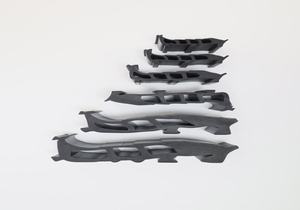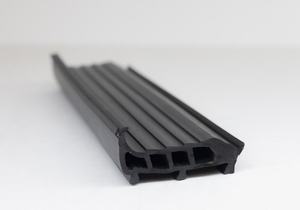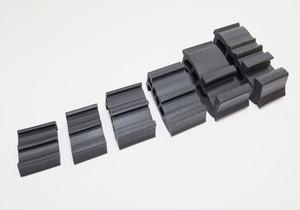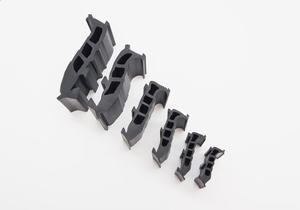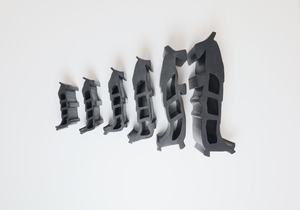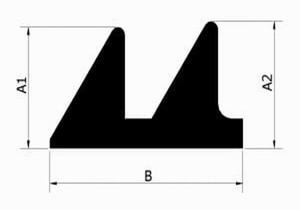Infrastructure gaskets are essential components used in various civil engineering and construction projects to provide sealing solutions for infrastructure systems, including pipelines, manholes, tanks, and utility structures. These gaskets are designed to create watertight and airtight seals, preventing leakage, infiltration, and contamination while accommodating movement, vibration, and thermal expansion or contraction in infrastructure networks.
Here’s a comprehensive description of infrastructure gaskets:
- Functionality: Infrastructure gaskets serve multiple functions within civil engineering and construction projects, including:
- Fluid Containment: Gaskets prevent the leakage of fluids, such as water, sewage, chemicals, or gases, in pipelines, manholes, and tanks, ensuring containment, safety, and environmental compliance.
- Sealing Joints: Gaskets seal the joints between pipes, fittings, manhole covers, and other infrastructure components, preventing water ingress, soil infiltration, or gas escape.
- Vibration Damping: Gaskets dampen vibration and attenuate noise generated by traffic, machinery, or environmental sources in infrastructure systems, enhancing public safety, comfort, and quality of life.
- Structural Integrity: Gaskets contribute to the structural integrity and longevity of infrastructure systems by reducing stress concentrations, preventing corrosion, and protecting against deterioration.
- Thermal Insulation: Gaskets provide thermal insulation and temperature resistance in pipelines, HVAC (heating, ventilation, and air conditioning) systems, and industrial equipment, minimizing heat loss or gain and optimizing energy efficiency.
- Types of Infrastructure Gaskets:
- Rubber Gaskets: Rubber gaskets, including EPDM, neoprene, nitrile, and silicone rubber compounds, are widely used in infrastructure applications for their flexibility, resilience, and chemical resistance. They are used in pipe joints, manhole covers, expansion joints, and tank seals to provide reliable sealing against water, chemicals, and environmental elements.
- Compression Gaskets: Compression gaskets, also known as compressed fiber or compressed rubber gaskets, are made from non-metallic materials such as aramid fibers, cellulose, or elastomers. They are compressed between mating surfaces to form a tight seal, making them suitable for flanged connections, valve seats, and pump housings.
- PTFE Gaskets: Polytetrafluoroethylene (PTFE) gaskets, commonly known as Teflon gaskets, offer exceptional chemical resistance, temperature tolerance, and low friction properties. They are used in corrosive environments, high-temperature applications, and critical sealing applications where other materials may fail.
- Metallic Gaskets: Metallic gaskets, such as spiral wound, corrugated metal, or jacketed gaskets, are made from metal alloys such as stainless steel, carbon steel, or Monel. They are used in high-pressure, high-temperature, or corrosive environments where non-metallic gaskets may not be suitable, providing robust sealing performance and durability.
- Expansion Joint Gaskets: Expansion joint gaskets, also known as movement joint gaskets or flexible connectors, accommodate movement, thermal expansion, and contraction in pipelines, bridges, and structural elements. They are made from elastomeric materials or fabric-reinforced rubber to provide flexibility and resilience under dynamic conditions.
- Manhole Gaskets: Manhole gaskets, also called frame and cover gaskets or manhole seals, provide watertight sealing between manhole frames and covers. They are typically made from rubber or neoprene materials and feature a molded profile to fit the mating surfaces of manhole components.
- Tank Gaskets: Tank gaskets are used in storage tanks, vessels, and containers to provide sealing between tank components, access hatches, and inspection ports. They are made from rubber, EPDM, or silicone materials and are designed to withstand exposure to chemicals, oils, fuels, and environmental conditions.
- Flange Gaskets: Flange gaskets are used in flanged pipe connections, valves, and fittings to provide sealing against fluid leakage and pressure loss. They are available in various materials, including rubber, compressed fiber, PTFE, and metal, and are selected based on the application requirements and operating conditions.
- Material Composition: Infrastructure gaskets are made from a wide range of materials selected based on their performance characteristics, compatibility with media, and environmental conditions, including:
- Elastomers: Rubber compounds such as EPDM, neoprene, nitrile, silicone, or fluorocarbon offer flexibility, resilience, and chemical resistance for sealing applications.
- Fibers: Compressed fiber materials such as aramid fibers, cellulose, or synthetic fibers provide strength, resilience, and temperature resistance for compression gaskets and joint seals.
- PTFE: Polytetrafluoroethylene (PTFE) offers exceptional chemical resistance, temperature tolerance, and low friction properties for high-performance gaskets in corrosive or high-temperature environments.
- Metals: Metal alloys such as stainless steel, carbon steel, Monel, or Inconel provide strength, durability, and corrosion resistance for metallic gaskets in high-pressure or high-temperature applications.
- Thermoplastics: Thermoplastic materials such as polyethylene (PE), polypropylene (PP), or polyvinyl chloride (PVC) offer chemical resistance, low friction, and dimensional stability for specialized gasket applications.
- Operating Conditions: Infrastructure gaskets are designed to withstand a wide range of operating conditions encountered in civil engineering and construction projects, including:
- Temperature Extremes: Gaskets must function effectively across a wide range of temperatures, from freezing conditions in cold climates to high temperatures in industrial environments or direct sunlight exposure.
- Chemical Exposure: Gaskets are selected based on their compatibility with fluids, chemicals, or gases encountered in the application, preventing degradation, swelling, or deterioration over time.
- Pressure Variations: Gaskets must maintain sealing integrity under varying pressure conditions, from vacuum applications to high-pressure fluid systems or hydraulic networks.
- Movement and Vibration: Gaskets must accommodate movement, vibration, and dynamic loading in infrastructure systems such as bridges, pipelines, or expansion joints without compromising sealing performance.
- Environmental Exposure: Gaskets exposed to outdoor environments must resist UV radiation, ozone exposure, weathering, and environmental contaminants to maintain sealing effectiveness and longevity.
- Installation and Maintenance: Proper installation and maintenance practices are essential for ensuring the effectiveness and longevity of infrastructure gaskets:
- Installation: Gaskets should be installed according to manufacturer specifications, using compatible adhesives, sealants, or fasteners to achieve proper alignment, compression, and sealing.
- Inspection: Regular inspection of gaskets for signs of wear, damage, or deterioration is necessary to identify and address potential issues before they compromise sealing performance.
- Cleaning and Lubrication: Gaskets should be cleaned regularly to remove debris, dirt, or contaminants that could impair sealing effectiveness. Lubrication of gaskets and mating surfaces helps reduce friction, wear, and corrosion, extending gasket life and reliability.
- Standards and Certification: Infrastructure seals may comply with industry standards and specifications established by organizations such as ASTM International, ANSI (American National Standards Institute), AWWA (American Water Works Association), or DIN (Deutsches Institut für Normung). Compliance with standards ensures that gaskets meet specified performance criteria for quality, durability, and compatibility with infrastructure applications.

